Memory and Healing in El Salvador
Luke Hansen, S.J., took part in delegation to El Salvador from July 24 to Aug. 1, 2014, to mark the 25th anniversary of the assassination of six Jesuit priests, Elba Ramos and her daughter Celina at the University of Central America. The delegation was sponsored by the Ignatian Solidarity Network and Christians for Peace in El Salvador. Hansen writes in “Truth, Then Justice” (http://americamagazine.org/issue/truth-then-justice) the delegation witnessed the bitter fruits of a civil war (1980-1992) but also many concrete signs of life and hope and healing. Hansen, a former associate editor of America and a student at the Jesuit School of Theology in Berkeley, Calif., a graduate school of Santa Clara University, tells the story in this photo journal.
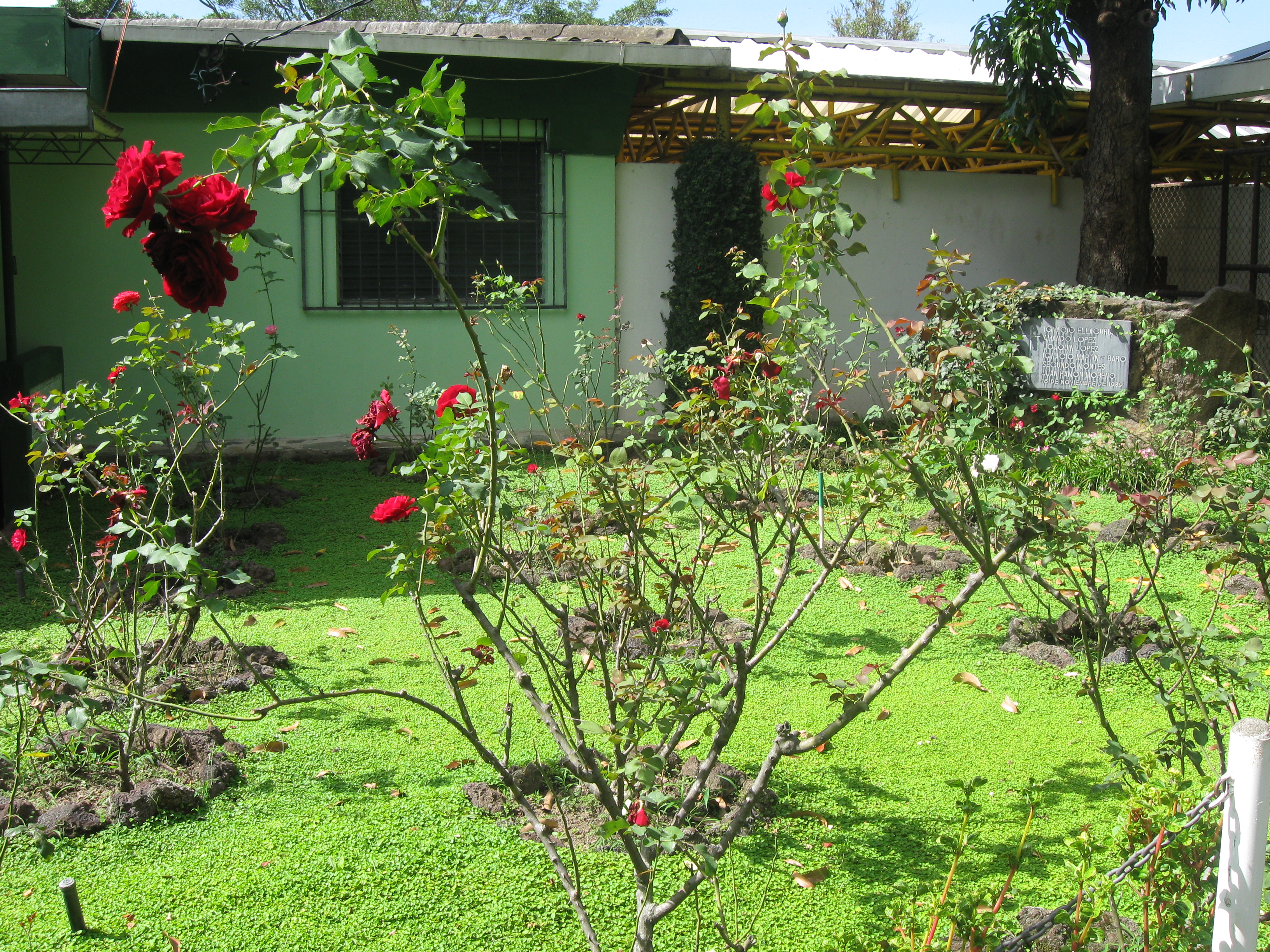
In the early morning hours of Nov. 16, 1989, several members of the Salvadoran military took four Jesuits from their rooms at the University of Central America and executed them on the lawn of the Jesuit residence. (Two other Jesuits, along Elba Ramos and her daughter Celina, were killed in their rooms.) Obdulio Ramos, the husband of Elba and father of Celina, planted roses on the lawn and cared for them until his death in 1994. The roses remain as a testament to life and resurrection.
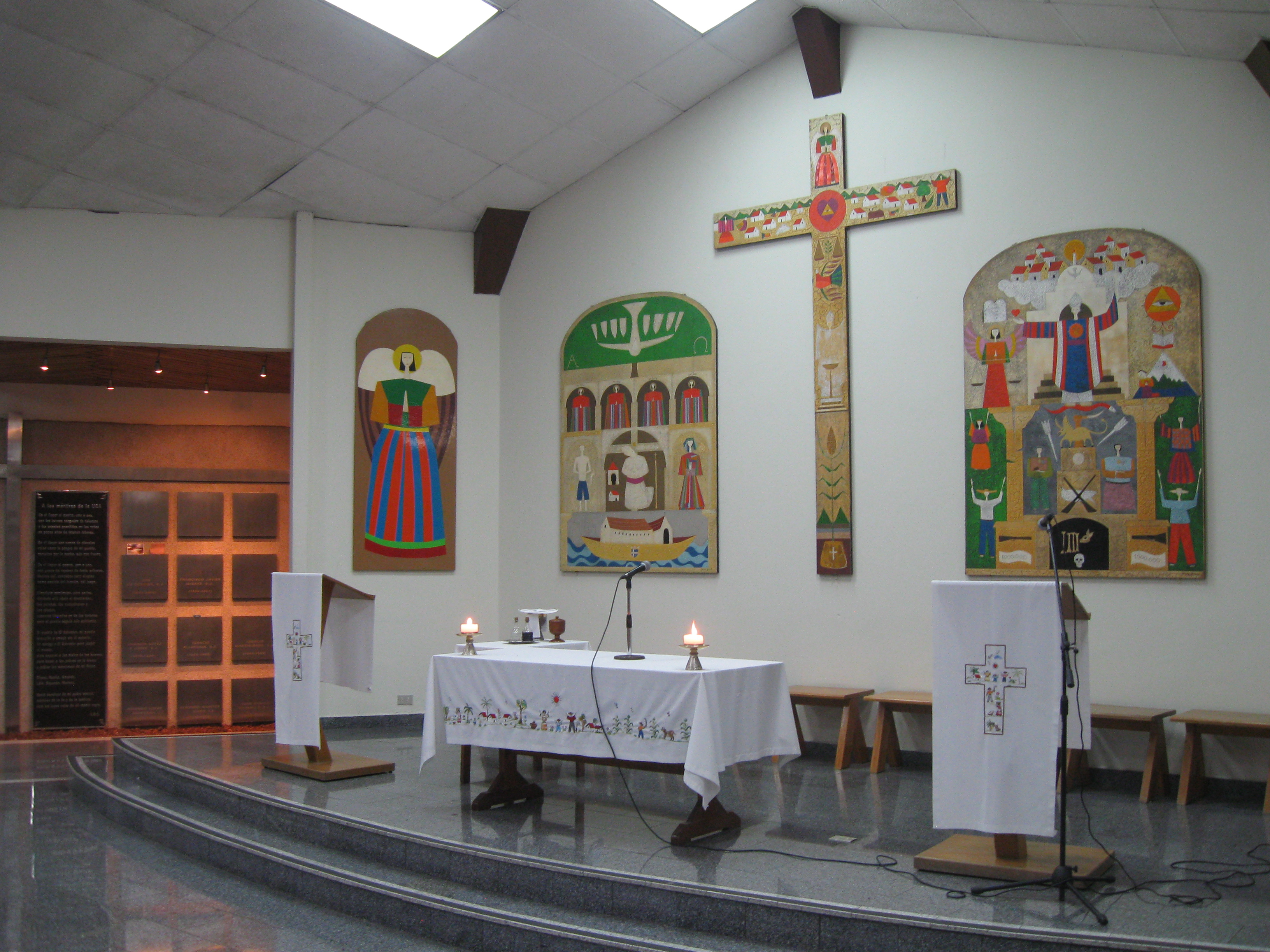
The bodies of the six Jesuits rest to the left of the altar in the main chapel of the University of Central America. A plaque next to the bodies includes two important lines from the Jesuits’ general congregation in 1975. Translated from Spanish, it reads, “What is it to be a companion of Jesus today? It is to engage, under the standard of the Cross, in the crucial struggle of our time: the struggle for faith and that struggle for justice which it includes…. We will not work in the promotion of justice without paying a price."
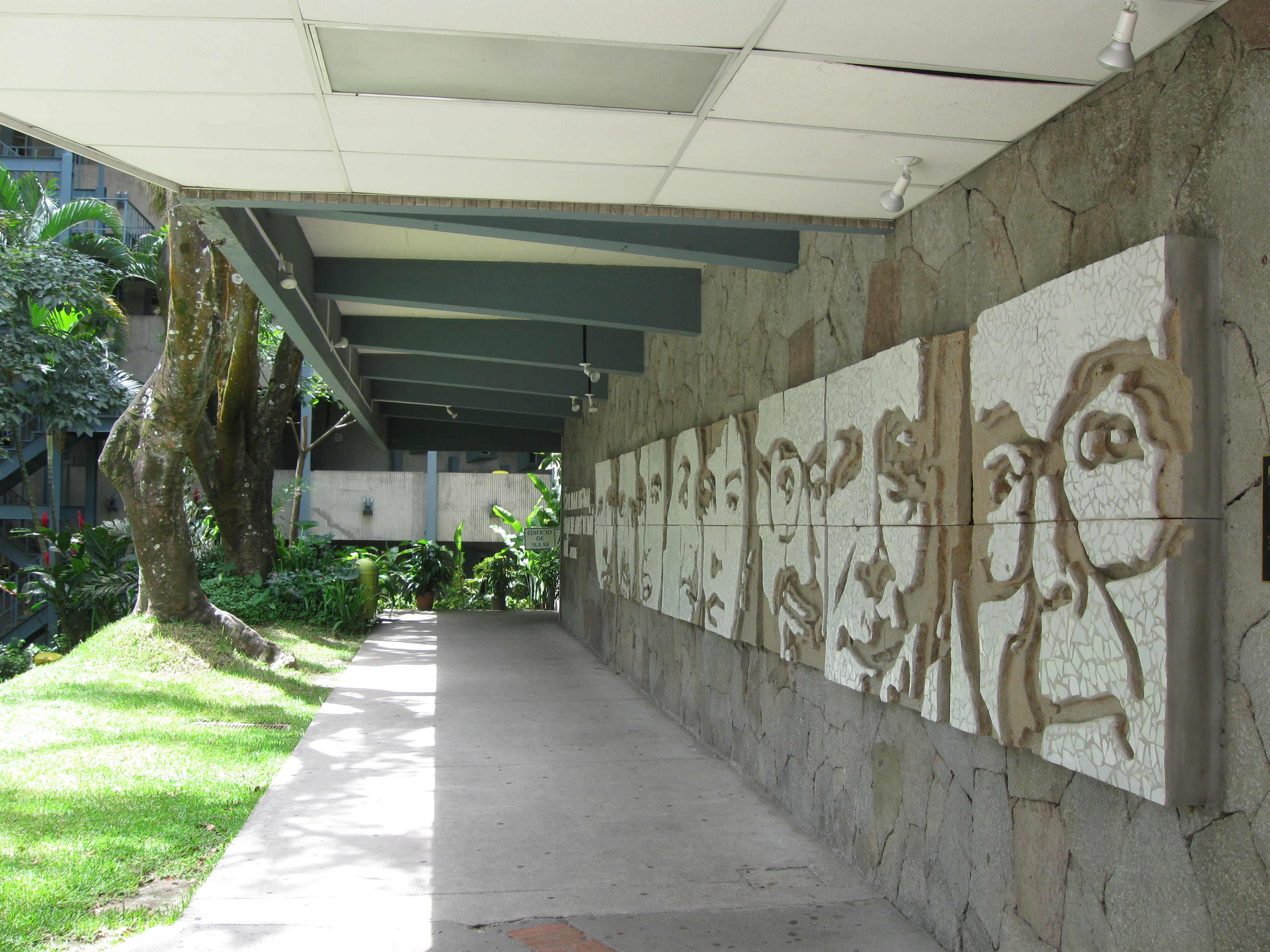
This concrete and ceramic memorial to the martyrs, located on the campus of the University of Central America, was dedicated on Nov. 15, 2013. The inscription to the left of their faces, translated from Spanish, reads, “If the world hates you, realize that it hated me first” (Jn 15:18).
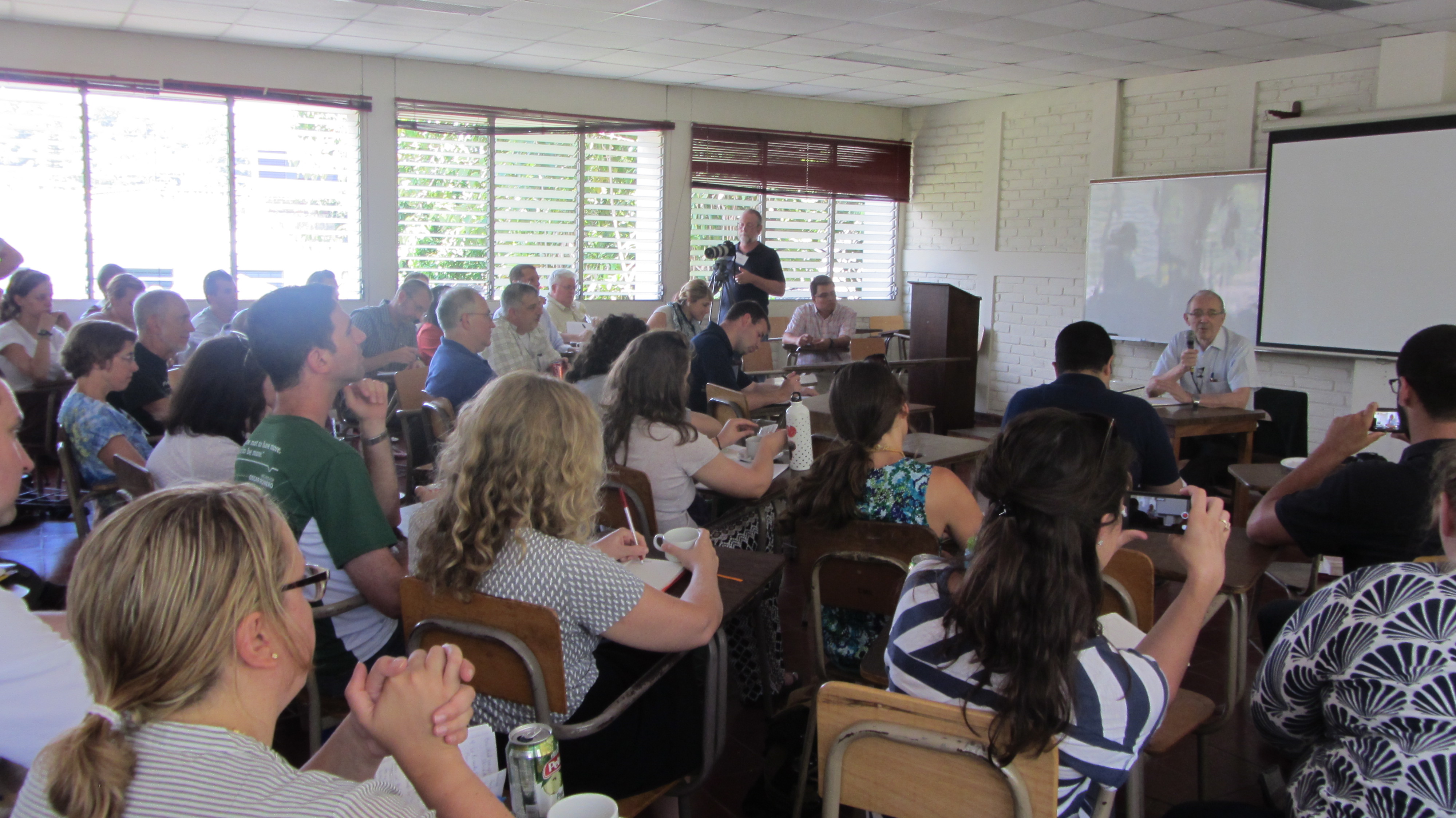
Jon Sobrino, S.J., a theologian at the University of Central America, was in Thailand when six of his community members were murdered in 1989. He spoke to the delegation about the legacy of his martyred brothers. “The church here decided to change, to make an option, not for the ‘excellence’ of our school, not for knowledge, but for the poor.” Father Sobrino explained that the option for the poor “doesn’t only mean being good to the poor,” like giving money to a beggar, “but to take responsibility, to confront those who tell lies and produce the poor. The poor do not fall from heaven, but are the product of our hands, our structures. The martyrs took on this responsibility.” (Photo by Christopher Kerr)
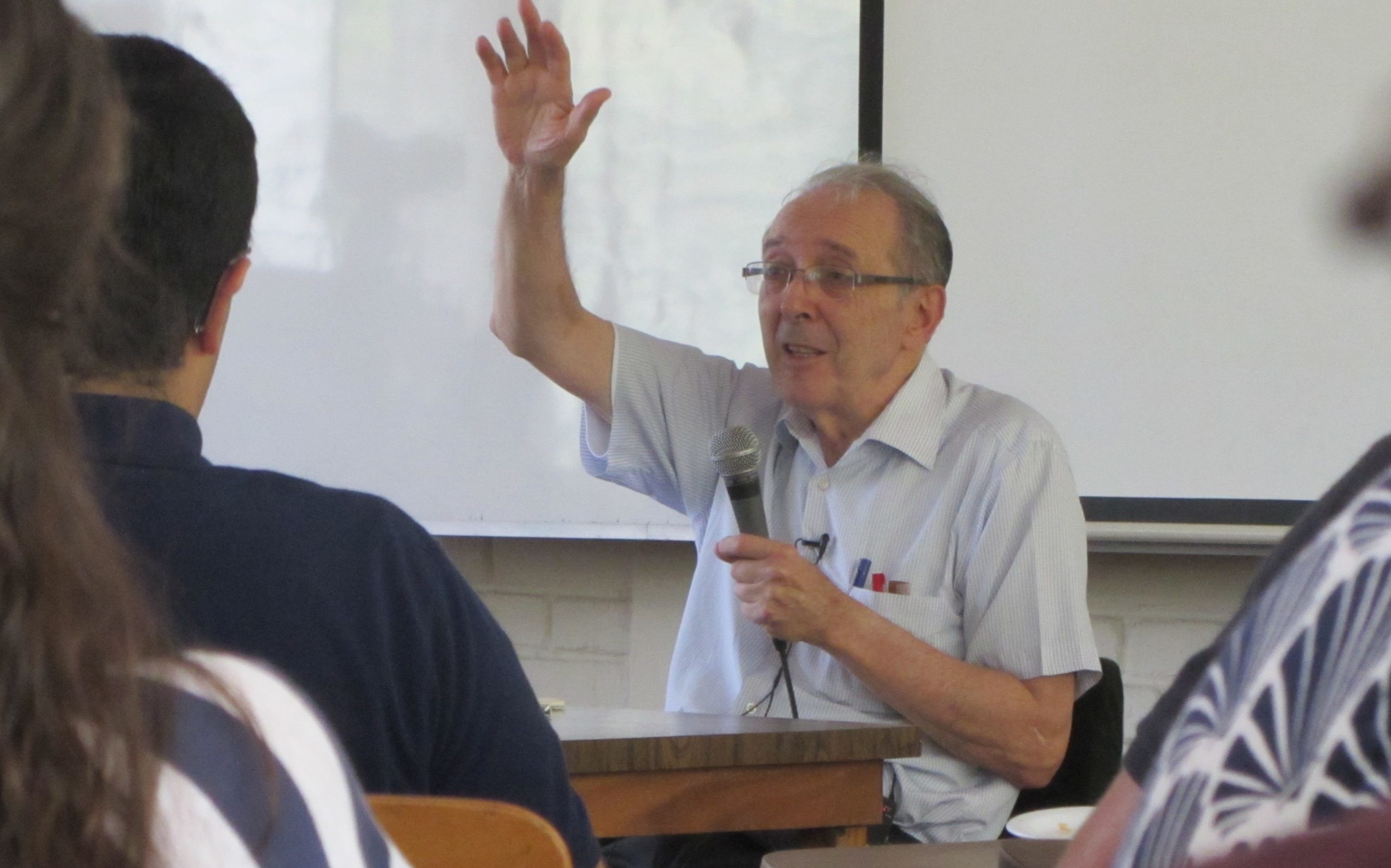
A member of the delegation asked Father Sobrino if he had a message for young people today. He responded, “They need to receive a message that evil is real,” and as an example he mentioned what is happening in the Gaza Strip. Young people, he said, need to “encounter reality and feel affected by it.”
Father Sobrino was also asked about Pope Francis. He responded, “I like a lot that Francis says that Lampedusa is real.” [On his first papal trip outside of Rome, Francis visited the island of Lampedusa in the Mediterranean, where hundreds of African migrants have died at sea.] Father Sobrino continued, “There is something good and important in this pope. If we only applaud or whistle, that’s bureaucracy. I hope he has force. I hope this pope makes us walk in history.” To follow this pope, he said, means to see “there are Lampedusas in the United States.” (Photo by Christopher Kerr)
Andreu Oliva, S.J., the current president of the University of Central America, San Salvador, told the delegation that the peace accords have made a lasting impact in the area of political rights and freedom of expression and association, but there is much more work that needs to be done. “The peace accords achieved an end to the war, but not reconciliation or justice or an improvement of living conditions,” he said. “The accords could have been a path to reconciliation” but were not completely fulfilled.
“There are different visions of reconciliation in the country,” Father Oliva explained. “Some people call for truth and reparations, while others say we should ‘forgive and forget,’ but they are not even willing to ask for forgiveness.” The human rights office of the UCA, he said, has called for an international tribunal for restorative justice, but the government has not supported this proposal. (Photo by Christopher Kerr)
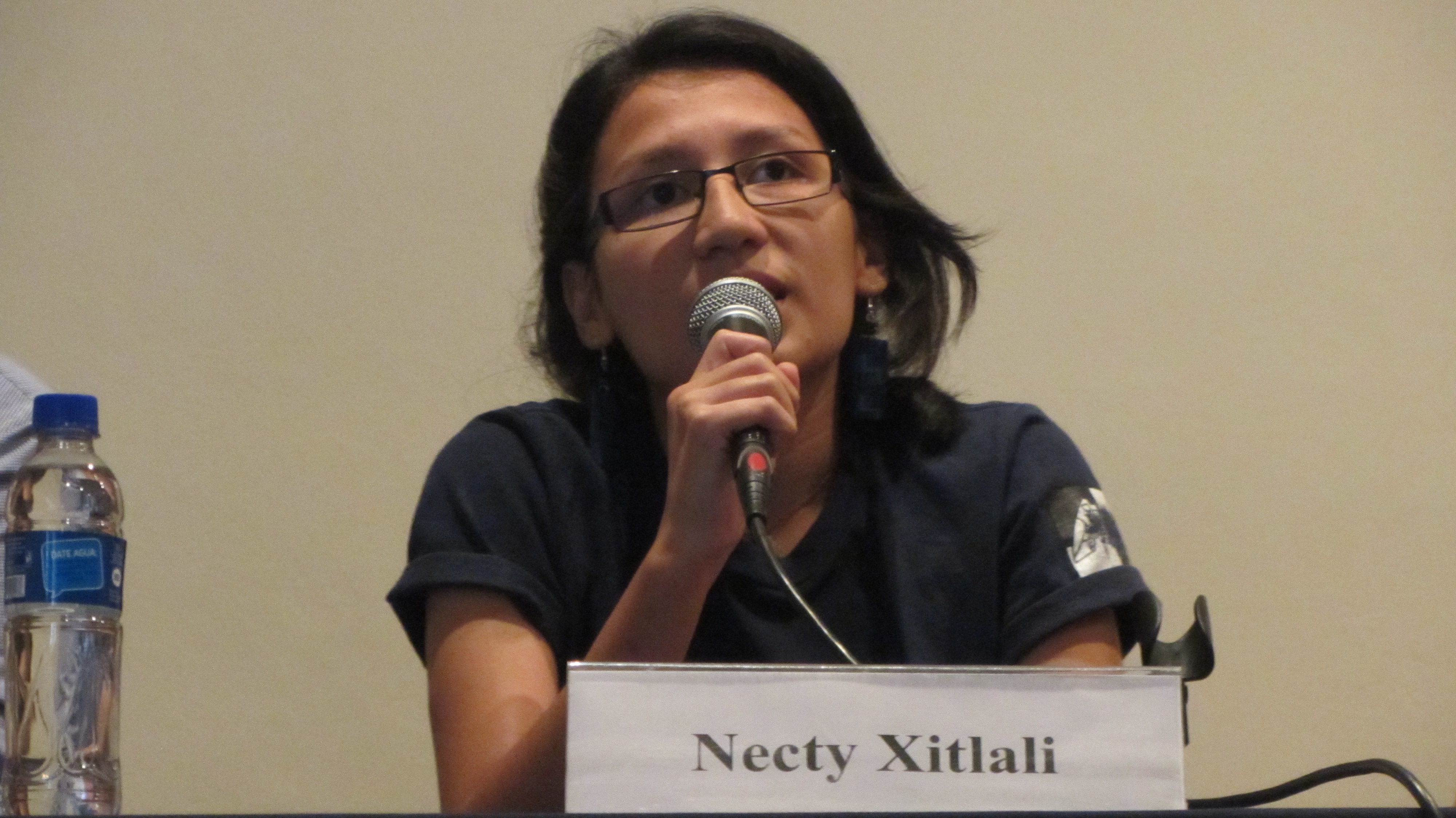
Several students and a professor at the University of Central America spoke to the delegation about the legacy of the Jesuit martyrs. Necty Xitlali, who studies psychology, said that she made weekly visits to a rural community and spent time with the children there. “I cried when I left,” she said. The families have only a little but shared a lot and “were not concerned with our gratitude. So too we have to give everything we have at the university to the people.”
Claudia Loucel, a student of economics, said that the UCA provided her an opportunity to meet people who live in poverty, which is how she learned that “behind economic indicators, there are real people.” She added, “Our permanent tribute to the martyrs is our lives. We too believe in the possibility of a better world.”
Roberto López, chair of the sociology department at the UCA, studied under Segundo Montes, S.J. He said that the six Jesuits, who were murdered when he was 20, provided an example of collaboration for a common cause, interdisciplinary work, dialogue, risk-taking for historic change and coherence between discourse and action. The Jesuits “lit our way, inspired us, and animated us to do the same,” he said. “Their martyrdom showed us the seriousness of what we faced, the need to transform reality, and the level of commitment we needed to give our lives to peace and justice. This is why I work here today.” (Photo by Christopher Kerr)
On the Feast of St. Ignatius Loyola, the delegation celebrated Mass in the hospital chapel where Archbishop Oscar Romero was assassinated on March 24, 1980. Next to the crucifix, an inscription reads, “En este altar Mons. Oscar A. Romero ofrendo su vido a Dios por su pueblo,” which is translated, “At this altar Archbishop Oscar A. Romero offered his life to God for the people.”
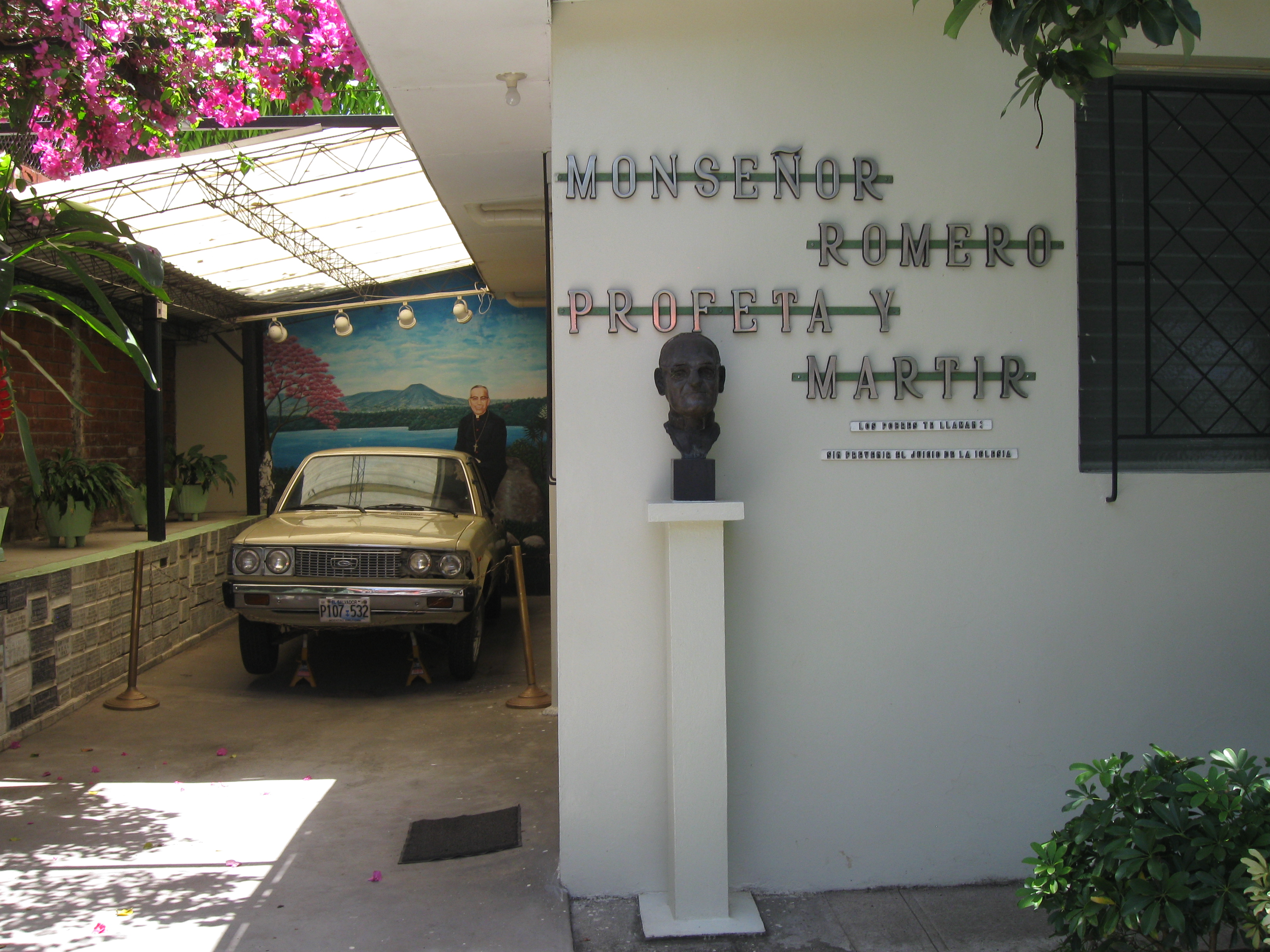
The delegation visited the house of Archbishop Oscar Romero. The proclamation on the front of the house reads: “Monseñor Romero: Profeta y Martir. Los pobres te llaman: sin prevenir el juicio de la iglesia,” which can be translated, “Archbishop Romero: Prophet and Martyr. The poor have announced it, without the judgment of the church.”
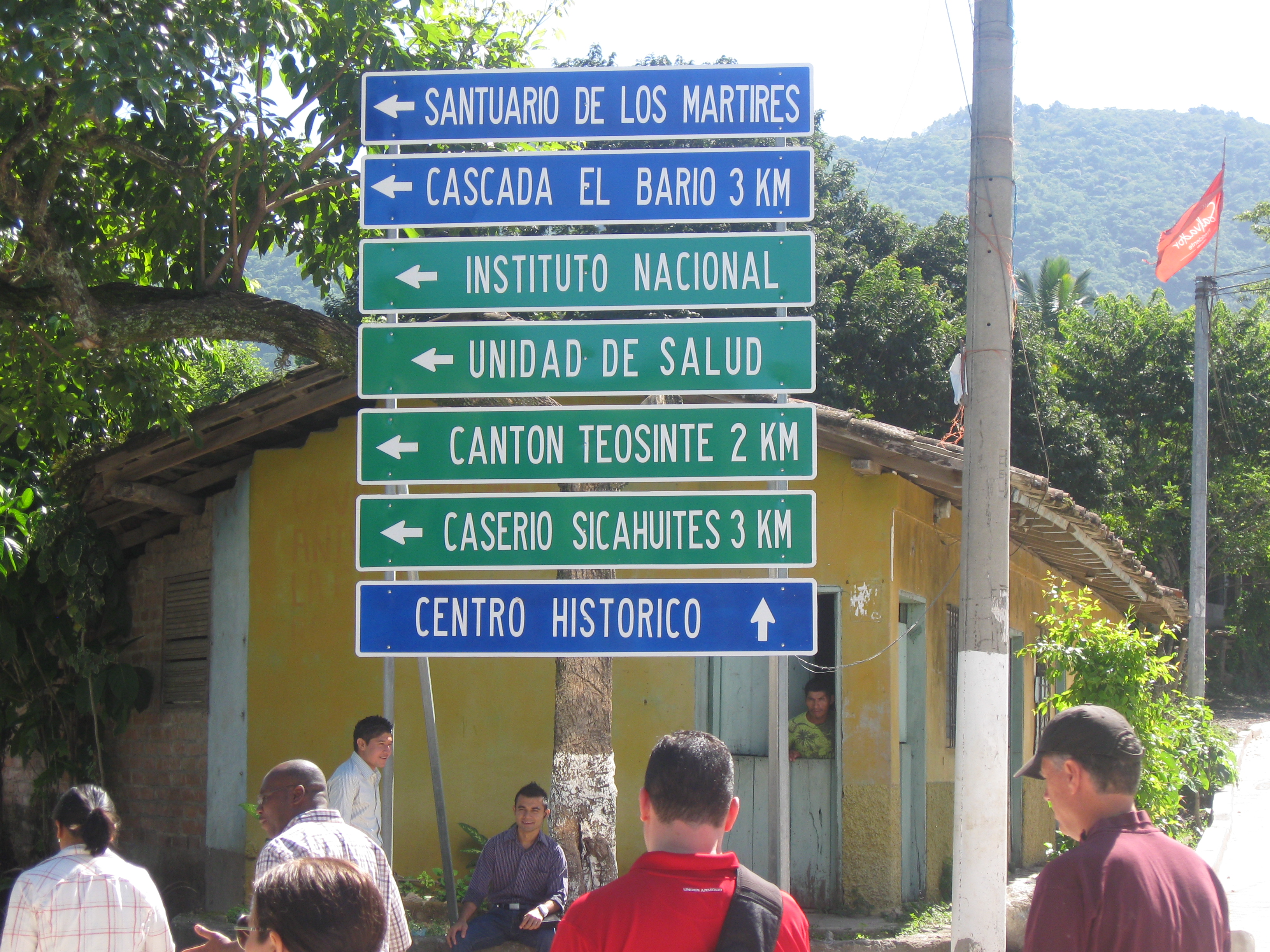
In Arcatao, El Salvador, a small town nestled amid stunning mountain vistas near the Honduran border, the historical memory committee is charged with preserving the memory of the civil war that left more than 75,000 dead—and thousands more “disappeared”—from 1980 to 1992. Their latest project: building a memorial chapel to hold some of the exhumed bodies from a nearby massacre. It is called “El Santuario de los Martires” or “The Sanctuary of the Martyrs.”
At present, nine bodies from different massacres are buried near the memorial chapel—a work in progress—and the community waits for more bodies from the local medical examiner. It will not be possible to exhume all of the bodies from the war era, however, because of the passage of time and the fact that the Sumpul River swept away so many of the bodies. (Photo by Don Clarke)
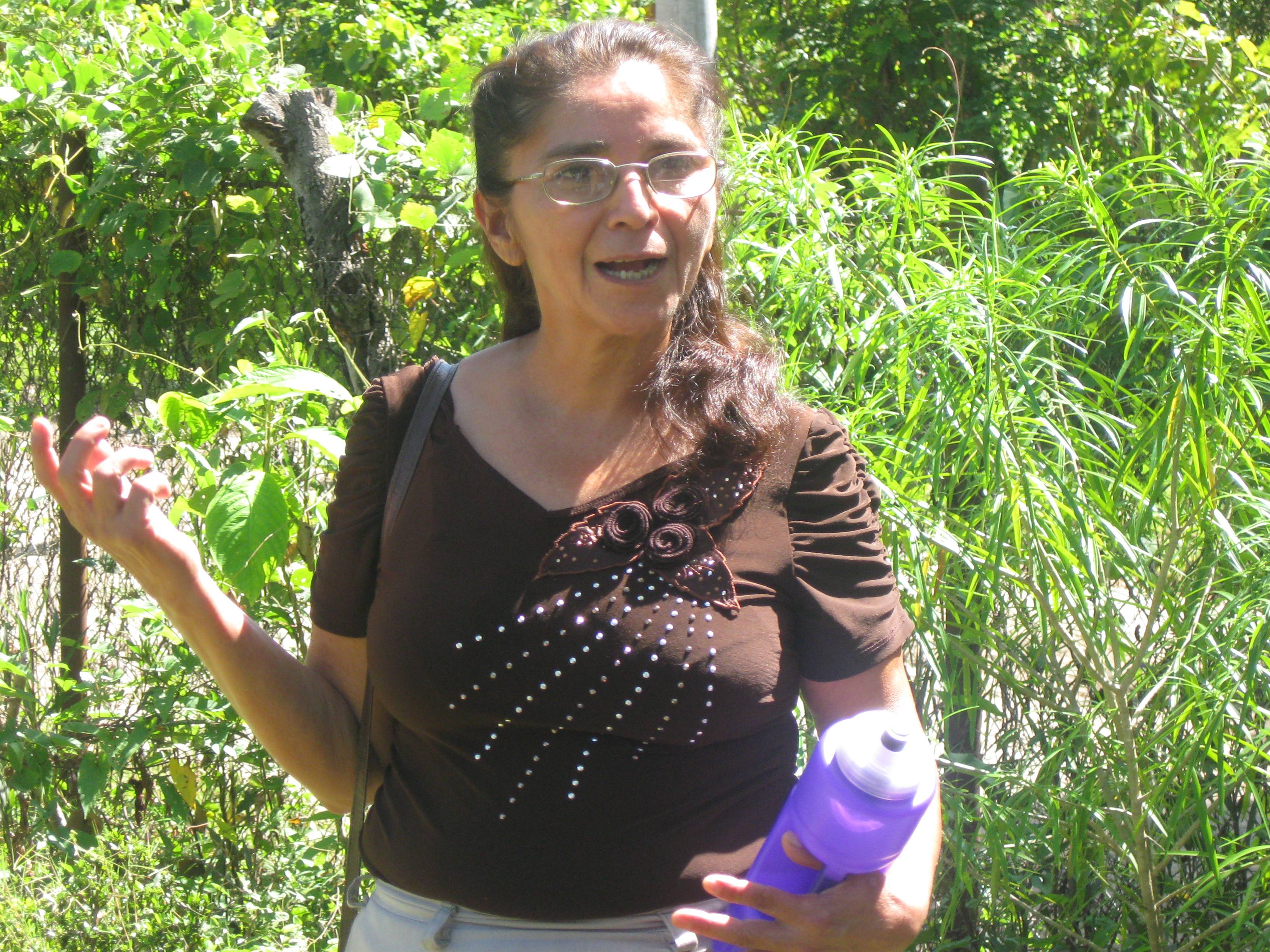
The memorial chapel offers a space for remembering and mourning, but that is not all. Rosa Rivera y Rivera, who is helping lead the project, explained that a garden and a pathway lined with flowers are also essential components of the memorial. “Flowers are signs of life and joy,” Rosa explained through an interpreter. “We cannot remain only in the past. We must educate our children” for the sake of the future, “so that it never, never happens again.”
Students from the local Jesuit school have completed service hours to help build the memorial chapel, and the community has raised funds through food sales, appeals to local businesses and the support of outside groups like Madison, Wis., a sister city of Arcatao. So far the community has invested nearly $20,000 into the chapel and memorial site. “We have many ideas but few resources,” Rosa Rivera y Rivera said. “We have trusted God to provide what we need.”
Once it is completed, the chapel will include a statue of Mary, who “like so many here,” Rosa explained, “saw the torture and killing of her child. Mary continued forward, and kept walking, so we too continue in the struggle.” (Photo by Don Clarke)
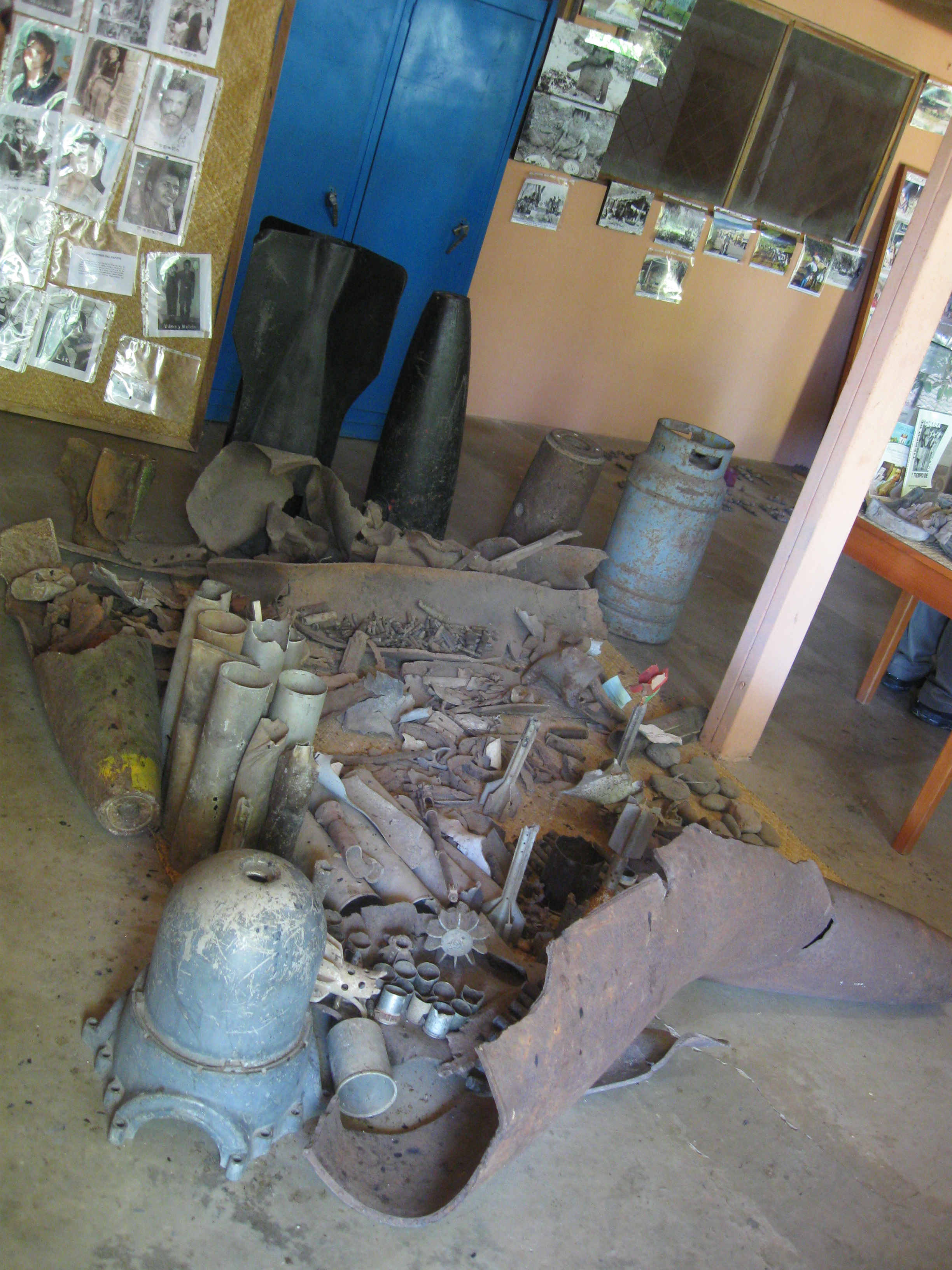
The historical memory museum in Arcatao displays many artifacts from the civil war, like broken and rusted shells of bombs and bullets as well as documentary photos of wounded men, children in makeshift schools and skulls from the massacre at the Sumpul River.
Rosa Rivera y Rivera, who serves on the historical memory committee, told the delegation that people in the town were run out of their homes as early as 1976. Government forces burnt their homes, she said, so people took clothes and food and fled to Honduran refugee camps or to the nearby mountains, where they lived on seeds, leaves and the roots of plantain trees. People eventually began to repopulate the town in 1986.
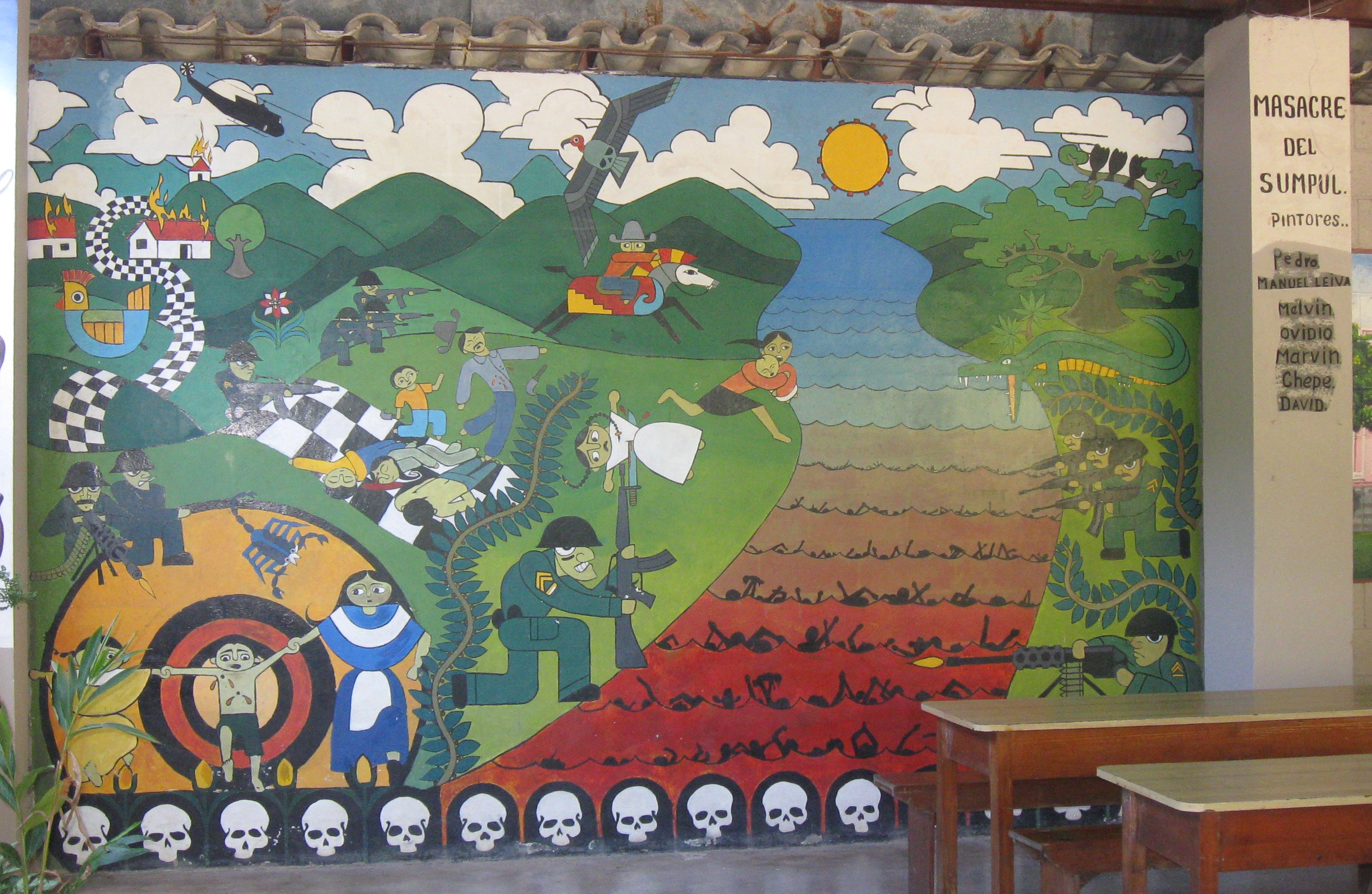
This mural, which is located near the Historical Memory Museum in Arcatao, depicts the massacre at the Sumpul River on May 14, 1990. The U.N. Commission on the Truth for El Salvador found “substantial evidence” that the Salvador military and a paramilitary group deliberately killed at least 300 innocent people, including women and children, at the Sumpul River. The report called the massacre a “serious violation” of international humanitarian and human rights law, and said that military authorities attempted to cover up the incident.
The U.N. commission took eight months to investigate what happened during the civil war and recommend measures for promoting national reconciliation and healing. The final report, “From Madness to Hope: The 12-Year War in El Salvador,” was published in March 1993. The commission received 22,000 complaints involving murder, torture and disappearance; 85 percent were attributed to state agents, and 5 percent to F.M.L.N. forces.
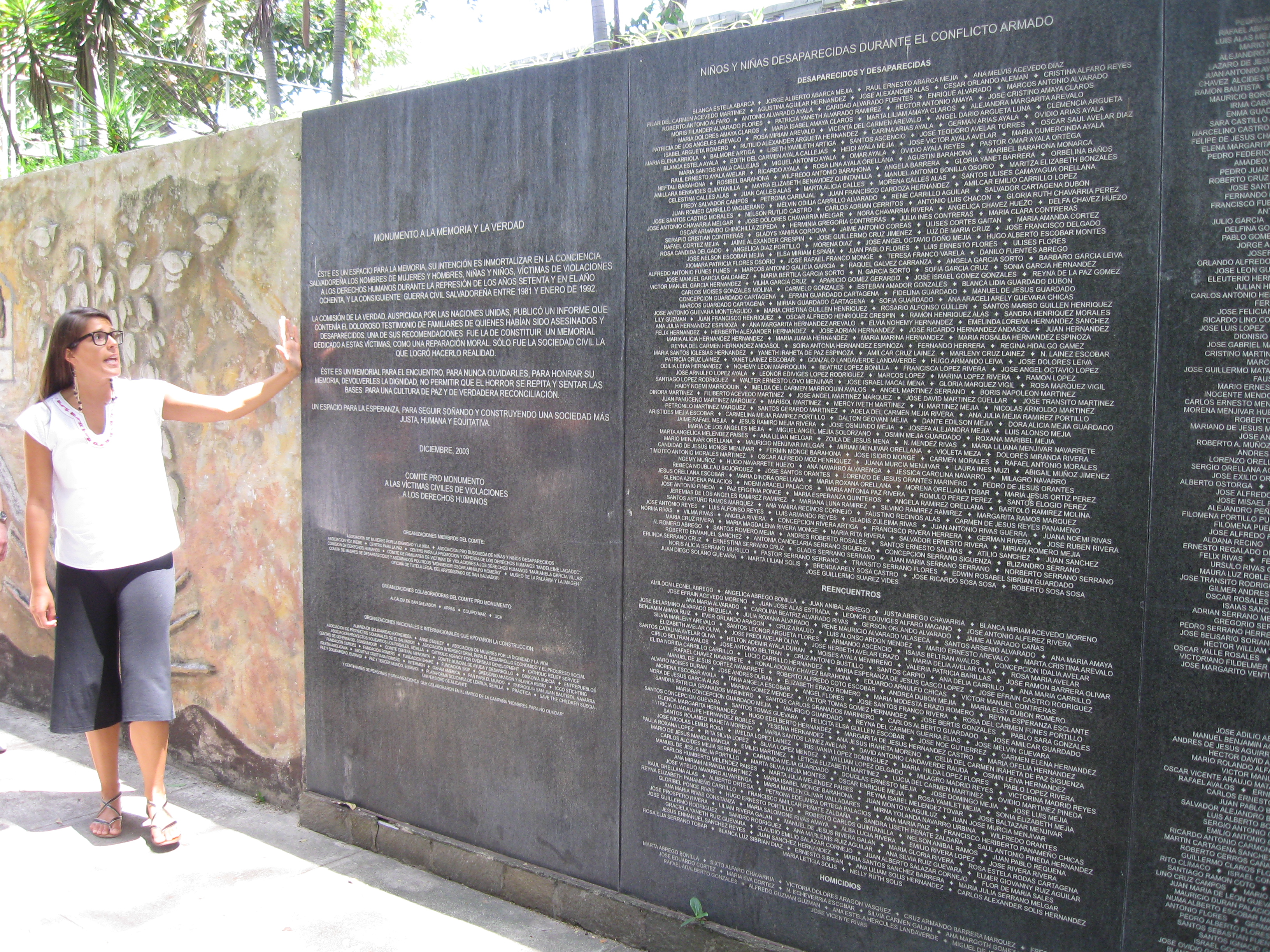
Theodora “Tedde” Simon, a delegation leader for Christians for Peace in El Salvador, or Crispaz, describes the history of the Monument to Memory and Truth, which is located in Parque Cuscatlan, a serene green space in the heart of San Salvador. The memorial, erected in 2003, stands 10 feet tall and stretches 300 feet. The wall immediately reminds the U.S. visitor of the Vietnam Veterans Memorial in Washington, D.C., but this wall lists only civilians who were killed or “disappeared” during the civil war. The list, organized by year and last name, includes 32,000 names. A final panel honors 30,000 anonymous civilian victims of the war.
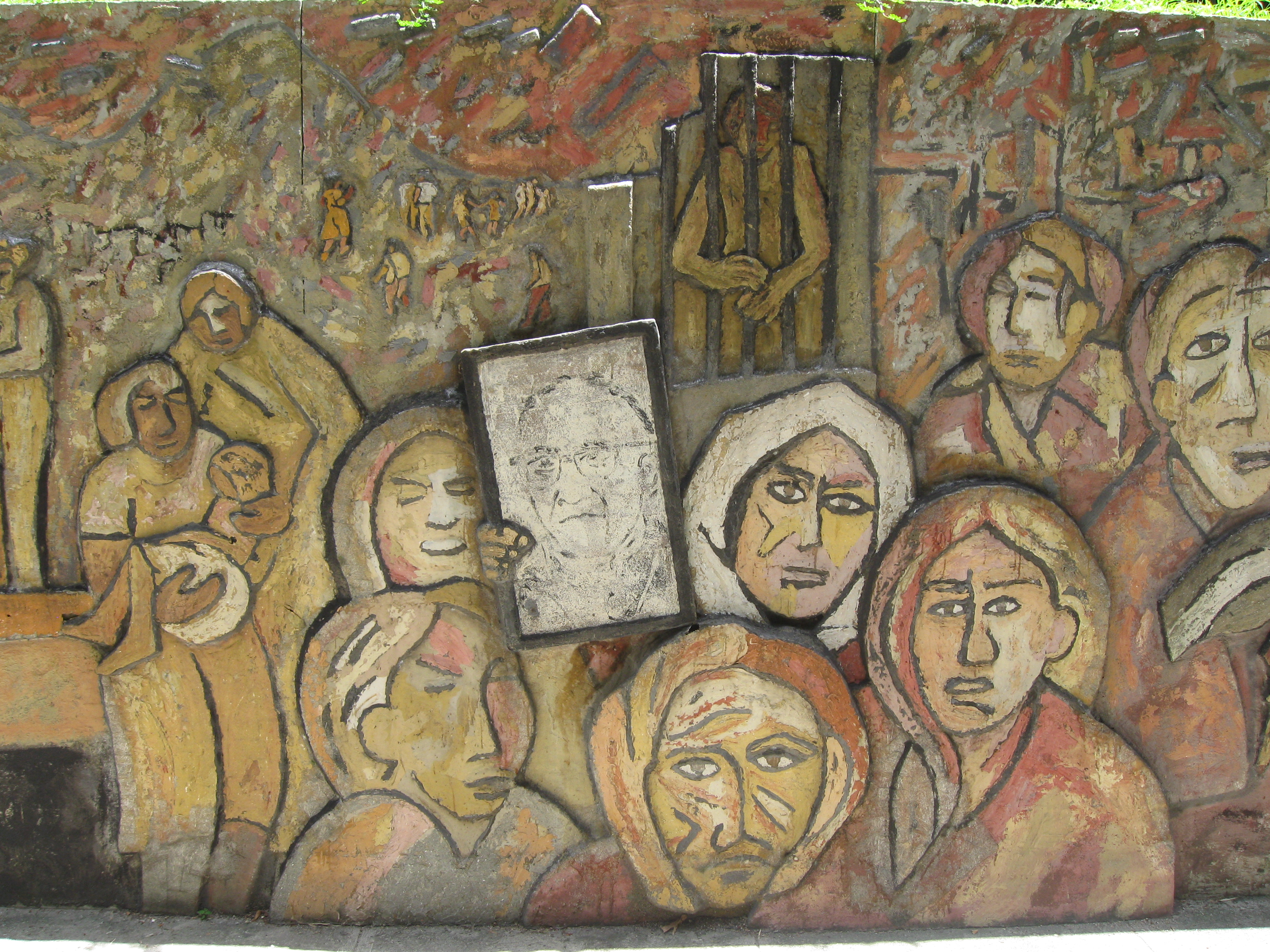
The first few sections of the Monument to Memory and Truth consist of a mural by Salvadoran artist Julio Reyes. The mural tells the story of colonialism, massacres and popular protests. In the final panel, flowers bloom and some of the petals transform into doves of peace.
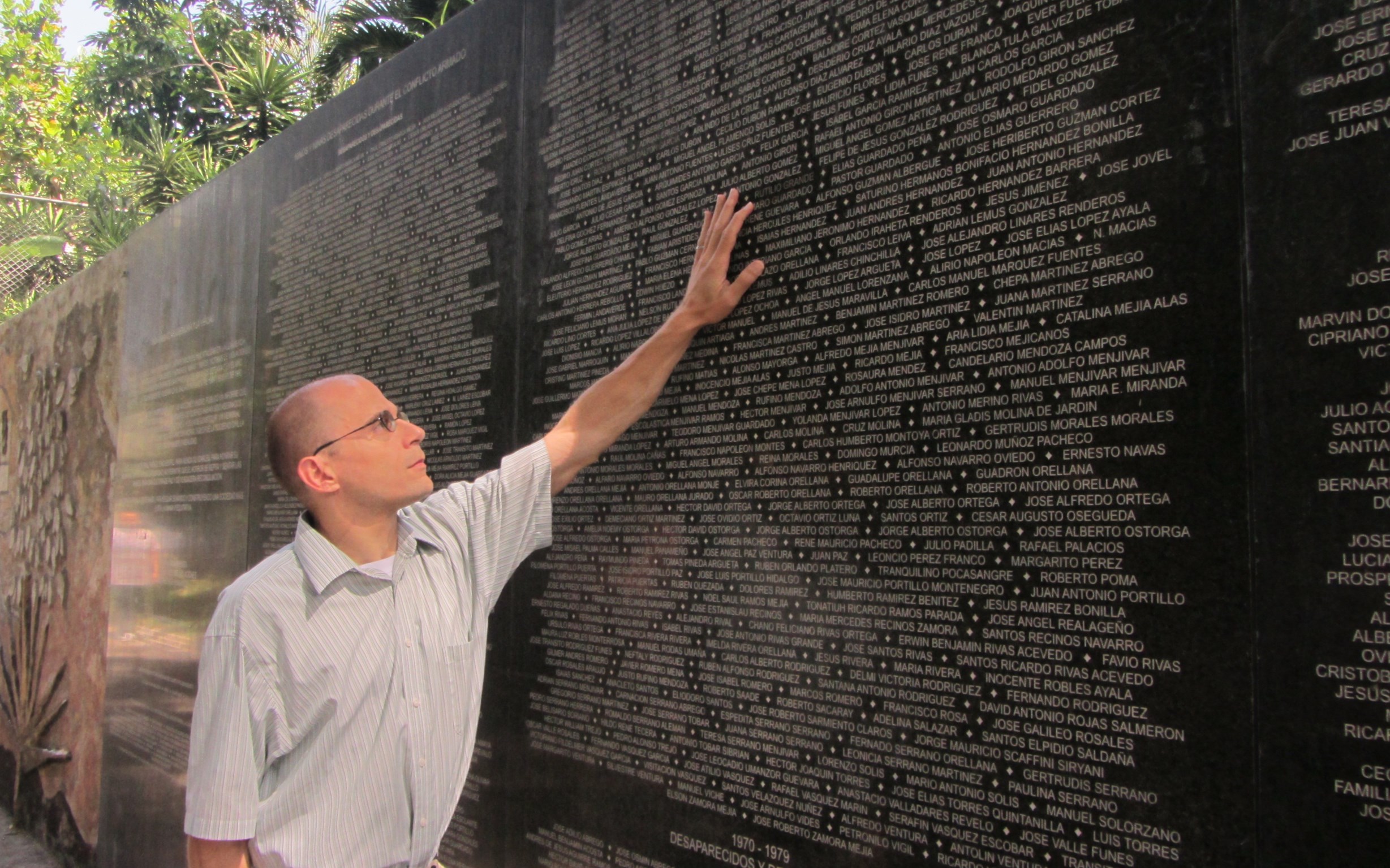
William Noe, S.J., parochial vicar of Sacred Heart Parish, Richmond, Va., points to the name of Rutilio Grande, S.J., who was assassinated in El Salvador in 1977. In a sea of 32,000 names it takes some work to find the most familiar names on the wall—Oscar Arnulfo Romero, Ignacio Ellacuría, Maura Clarke, Jean Donovan. The memorial serves as a stark reminder that unjust and untimely deaths were the fate of tens of thousands in the country, not just a few priests and sisters.
The deaths of Margarita Veronica Garcia, Nelsey Mirella Herrera, Isabel Luna, Maximino Rodriguez and Garardo Cruz Sosa, for example, may not have been reported in the newspaper, nor did they garner international concern or a remembrance in annual commemorations or pilgrimages; but the memorial—and the Gospel—invite us to imagine where they lived, whom they loved and who loved them. Whose world was turned upside down by their disappearance or death? In this way, the wall itself is an act of resistance to death and anonymity because it identifies people by name and thus recognizes their dignity. (Photo by Christopher Kerr)
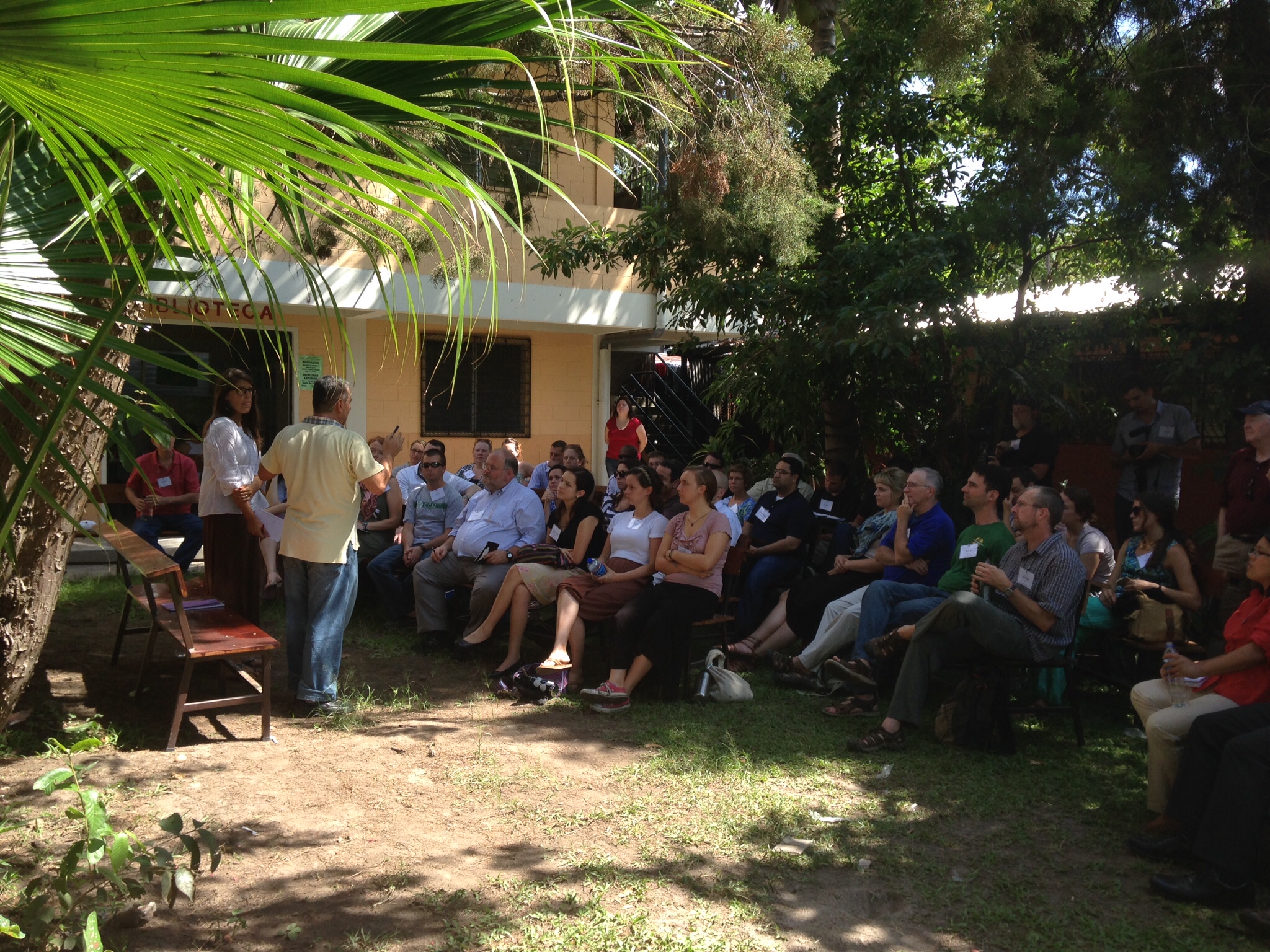
Padre Luis Salazar, the pastor of the thriving parish of Maria Madre de los Pobres near San Salvador, explained to the delegation, “We are a community of faith that believes in the God of life.” The parish grounds are filled with colors, beautiful murals, gardens and vegetation. (Photo by Christopher Kerr)
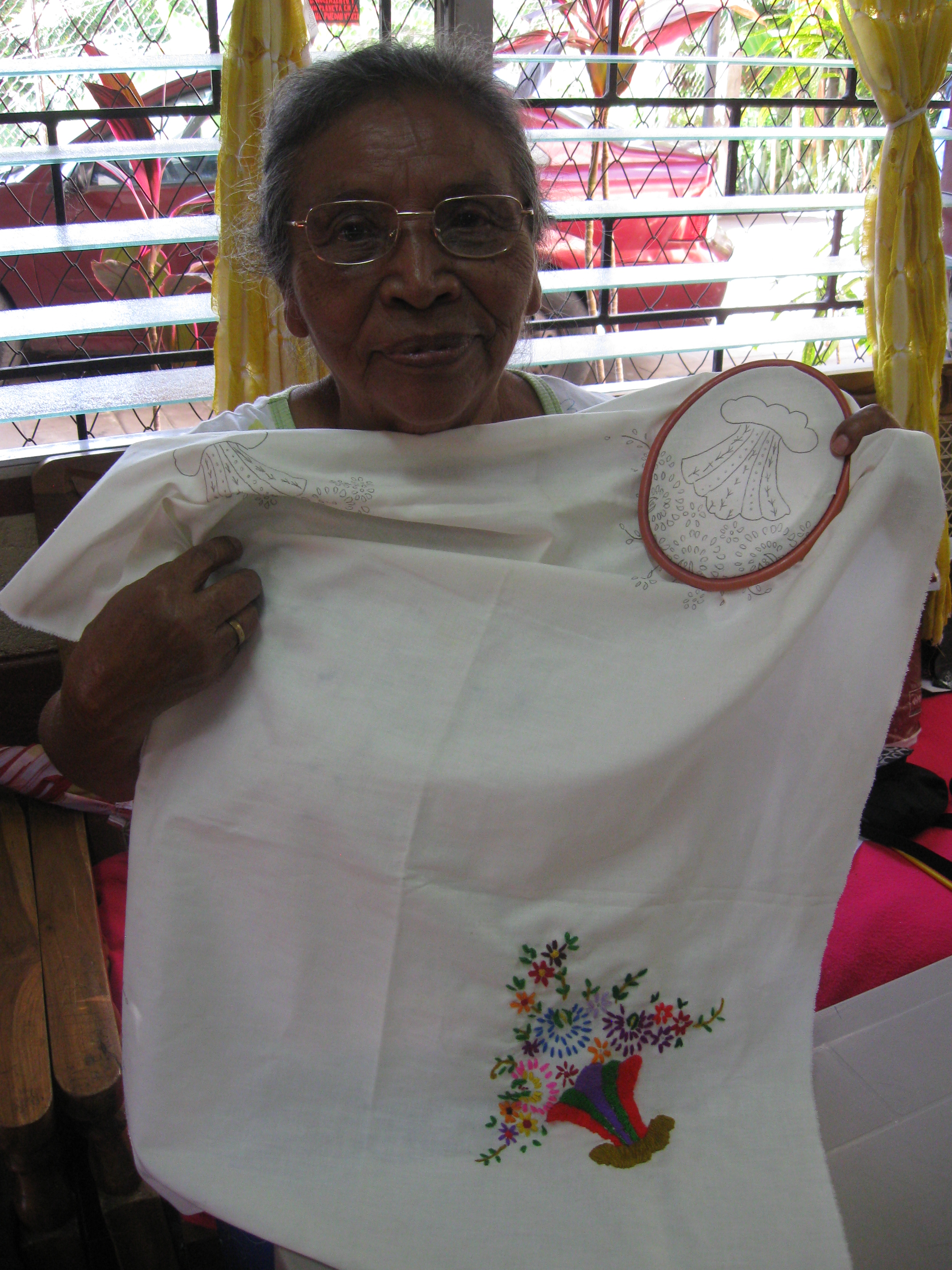
Dolores, a member of parish, displays some of her needlework. When our delegation visited the senior center at the parish, the elders stopped the work, put on some music, started dancing, and invited us to join them. In a welcoming speech, one of their leaders explained that their work is motivated by Archbishop Oscar Romero, whom they called “our pastor,” and Rutilio Grande, S.J.—both of whom lived, worked and died among the people of El Salvador—and now Pope Francis, “who celebrates the Gospel so joyfully.”
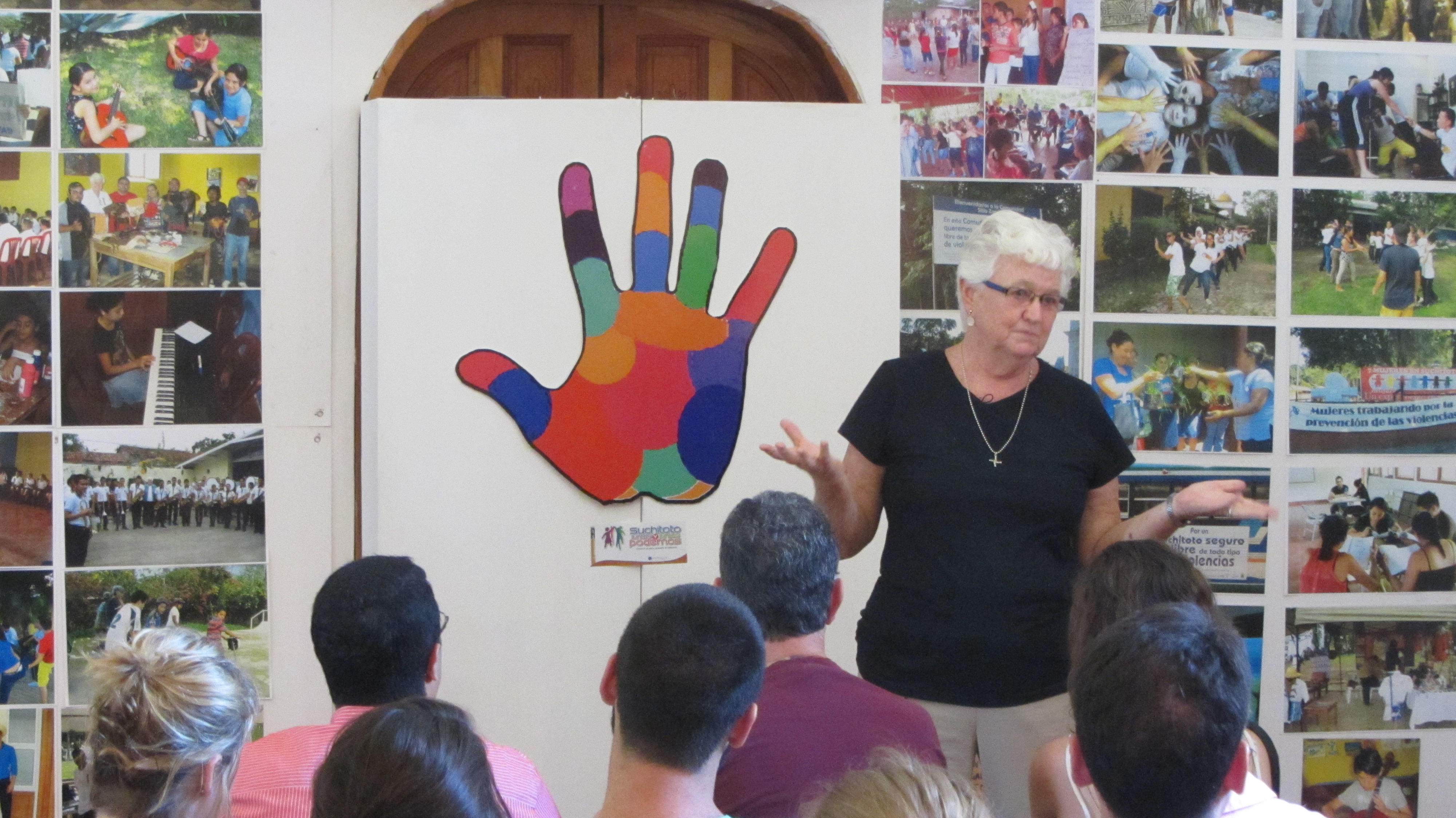
Peggy O’Neill, a Sister of Charity of St. Elizabeth in Jersey City, N.J., arrived in El Salvador during the civil war (1986) and still lives in the country. She works in the town of Suchitoto, where she founded the Art Center for Peace. A museum on the grounds is three years old and has attracted 12,000 visitors. “We want this museum to touch” the painful memories of the people “with tenderness,” she explained. The arts can help heal people, she said.
She asked the delegation to reflect on the prophetic vision of Isaiah, who said that the Lord God “will wipe away the tears from all faces; the reproach of his people he will remove from the whole earth” (Is 25:8). She then quoted Gustavo Gutierrez, who wrote in 'On Job' (1987), “Woe to those whom the Lord finds dry-eyed because they could not bring themselves to solidarity with the poor and suffering of this world!” (Photo by Christopher Kerr)
